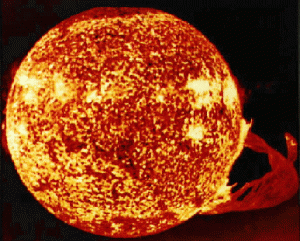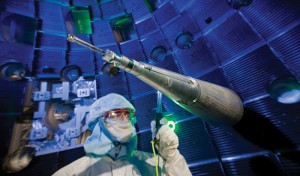 At the heart of many modern energy endeavors lies a singular symbol of pure power and the pinnacle of pursuits for pioneers in the field: The Sun.
At the heart of many modern energy endeavors lies a singular symbol of pure power and the pinnacle of pursuits for pioneers in the field: The Sun.
Just to clarify, we’re not talking about traditional solar energy the way we think of it today, but rather the internal process of Fusion which is at the very source of the Sun’s immense power.
For years, scientists have ambitiously sought to harness the power of nuclear fusion for energy, a process naturally occurring in stars (including our own Sun). While efforts have been relatively unsuccessful thus far, a monumental milestone was reached this week at a lab in California.
The National Ignition Facility (NIF) in Livermore, California is the self-proclaimed ‘Crown Joule’ of Laser Science (pause for uproarious laughter). The NIF is part of the Lawrence Livermore National Laboratory (LLNL) and is home to the largest laser in the world. In fact, the majority of the sprawling complex is the laser.
[FUN FACT: The movie Star Trek: Into Darkness was filmed partly at the NIF]
While it’s too small for destroying starships and planets, and too large for attaching to a frickin’ shark’s head the beam is perfect for “heating the target materials to temperatures of more than 100 million degrees and pressures more than 100 billion times the atmosphere of Earth”, according to the LLNL website. Coincidentally, this is perfect for Fusion research applications as it replicates “conditions similar to those in the stars.”
Since we’re not all particle physicists or energy technology research experts, let’s take a moment to go over what nuclear fusion is and how it differs from the other atomic energy process known as fission.
Nuclear fusion is a process by which the nucleus of a light-weight atom is fused to the nucleus of another light-weight atom, thereby creating a single, larger atom – and a tremendous amount of energy (which is the ultimate goal, of course). Hydrogen isotopes are very lightweight and essentially ideal fuel sources for fusion.
Fission, on the other hand, is the process by which a larger atomic nucleus is sundered into two smaller ones. Fission is a common practice in many power production facilities around the world, although not nearly as efficient as fusion could be if it were mastered. Because larger, heavier atoms are ideal for this process, the common choice for fission fuel is Uranium and Plutonium.
In the past, even as recently as one year ago to the day, researchers have used lasers (and sometimes magnetic fields) to fuse hydrogen isotopes successfully, yielding colossal energy output. However, all of those reactions required more energy to produce than the fusion yielded…until now. This week’s breakthrough marks the first milestone in fusion experimentation where the energy output was greater than the input.
As top scientists at the NIF heralded the event as “the single most meaningful step for fusion in recent years”, these pioneers of power look ahead to the next milestone eagerly. This advancement, while a major stride toward sustainable energy from fusion, is only a small beginning.
The next phases will likely involve a shiny new facility currently under construction in southern France, known as “ITER”, or International Thermonuclear Experimental Reactor. Most scientists agree that our civilization is still decades away from large-scale operational fusion reactors, but ITER will be their likely birthplace.
The FAQ on ITER’s website claims an ETA of 2020 for “First Plasma” and full-scale reactor operations up and running by 2027. These are bold and optimistic goals, to be sure, but at least while we’re awaiting the mass production of superheated plasma we still have good old fashioned coal to keep the lights on.


